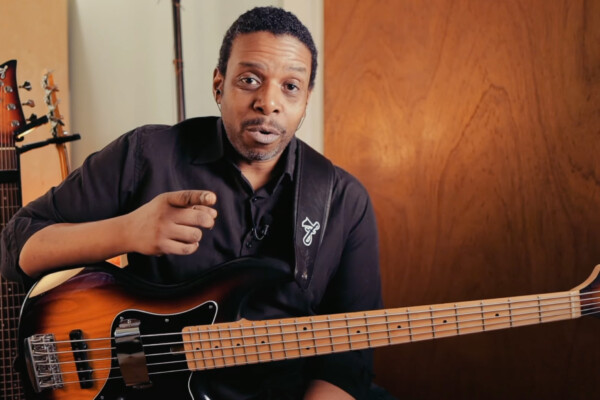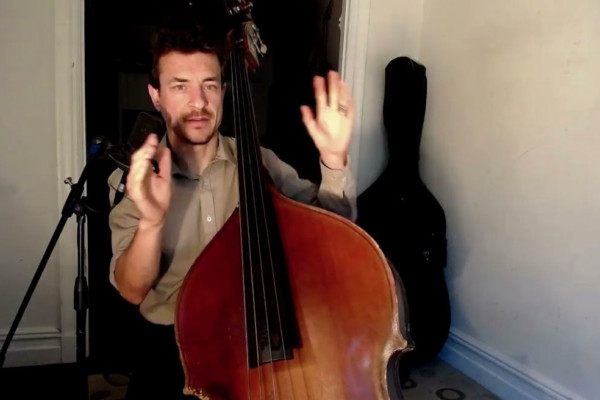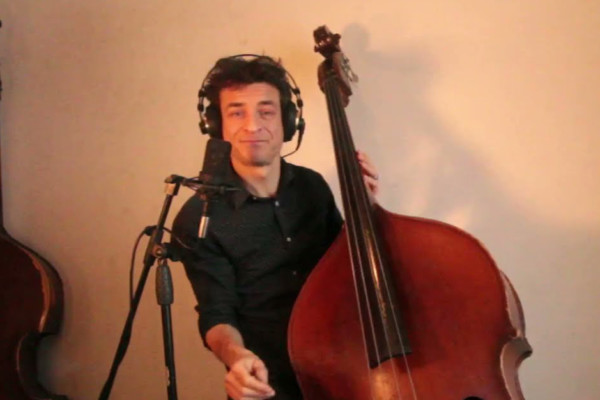Keeping Your Place with Timing Issues?

Q: Recently, with the help of my teachers, we pinpointed my main weakness, which is preventing me to be “free” with the bass, even with simple bass lines. When in the situation of “inventing” fills, and the end of a 4 bar line, for example, I am very often losing the “1” by the 5th bar. As if, when searching for a fill, I am no more aware of what’s going on around me, no more counting in my head, nothing… It is already true when I want to fill “only” 2 beats in the fourth bar. And it is getting worse and worse if I want to do longer fills. You can imagine the disaster when I am asked to take a 12 bar blues solo. Teachers tell me to count during my fills, but up to now, it is just impossible for me. Even with just syncopated lines, my internal count stops. So I learn the line like a robot! Do you have recommendations or exercises that would help me to get this internal metronome always “ON” in my head whatever I do?
A: It sounds to me like you are likely getting a musical version of “tunnel vision” when trying to be creative and add a little something to your grooves. What I mean is that you stop listening to the music around you and focus solely on what you are playing, likely not even noticing yourself drift from the rest of the band until you try and bring it back home and realize that your “home” is not where home is.
There are a few things you could try doing but, first and foremost, I would implore you to make a conscious decision to always listen to the entire band while you play, no matter what you are playing. I try to listen to the band in the 3rd person as if I was sitting in the audience. I try to play what I would want to hear as a music lover (not as a bass geek). This also helps me realize when maybe I’m a little too loud, playing a little too much, or not operating as a small part of the whole in some way.
I also think that something that is often overlooked in the shed is that idea of practicing things at different tempos and dynamic levels. I first had this idea when playing with various drummers and noticing that, when playing certain grooves, they always seemed to need to push or pull the music to their preferred tempo for that groove. The same thing often happens with fills, solos, etc. (I usually recommend to them that they work to fit their groove to the actual tempo, and not change the tempo to fit their groove).
I don’t just mean practicing playing that line super slow, getting it together, and then practicing it super fast, either. I mean being able to lock that groove/fill/idea in and make it feel good at 60bpm, 65 bpm, 70bpm – all the way to whatever max speed might be appropriate for the idea.
This is often something that musicians who operate in the studio excel at because it’s amazing how different a song can feel when you change the tempo by just a few bpm, and it’s not unusual to try takes at slightly different tempos to figure out where the song wants to be. As a studio musician, you need to be able to nail that take at 63bpm, and then again at 64.5bpm (yes, sometimes producers try fractions of bpm changes).
It sounds like you need to do 2 things, in my estimation.
- Drill some of your melodic ideas and concepts more so that they become more a part of your vocabulary. We need to practice things over and over again until they become second nature precisely because we don’t want to have to think about them when we’re playing them in context (with a band). The more we have to think, the less we listen.
- Focus on your time and rhythm, separate from your harmony workouts. I like to practice rhythm like a drummer, separate from harmony and then, once I have things somewhat comfortable, combine my rhythmic exercise with a harmonic exercise to start focusing on multiple things at once.
Here’s a column I wrote back in 2014 that speaks about working on rhythm.
Ultimately, it just sounds like you need more experience and more focused practice, so the trick will be focusing your shed time to address the obstacles directly related to your timing and listening issues.
Rhythmic exercises with a metronome are great for developing a feel for the rhythmic grid, transcribing lines and playing along with records is great for the ears, vocabulary, as well as time as you get used to playing every aspect of the tune in pretty regular time (things may shift if it wasn’t recorded to a click but it’s usually in a musically viable way. Things shifting organically is fairly common and natural as music should breathe a little bit, but everybody has to be feeling things the same way and doing it together).
Just focus on training your ears, actively listening to the music as you play, and drilling rhythmic exercises and can’t imagine that you’ll be having that problem for long!
Have a question for Damian Erskine? Send it to [email protected]. Check out Damian’s instructional books, Right Hand Drive and The Improviser’s Path.




Truly thoughtful and helpful reply – thanks!